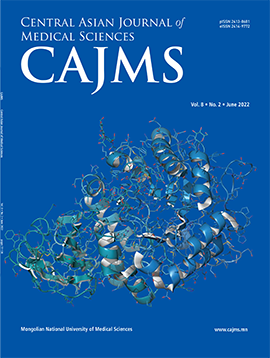Prediction of Preeclampsia by Maternal Factors and Biophysical Markers During the First-trimester
DOI:
https://doi.org/10.24079/cajms.2017.11.010Keywords:
Preeclampsia, Pregnancy First Trimester, Mean Arterial Pressure, Ultrasonography Doppler PulsedAbstract
Objectives: In this study, we examined the predictive effect of maternal factors, first-trimester mean arterial pressure (MAP) and uterine artery mean pulsatility index (mUt.A-PI) on the subsequent development of preeclampsia (PE). Methods: Maternal characteristics and medical history were recorded and biophysical markers included uterine artery flow velocity wave forms mUt.A-PI and MAP were measured in 393 single pregnancies who getting antenatal care at 11+0-13+6 weeks. Results: Sixty six (16.8%) cases had preeclampsia and 327 (83.2%) cases were unaffected by preeclampsia. One hundred nineteen (30.3%) of the 393 pregnancies were nulliparous, 274 (69.7%) pregnancies were multiparous. Seventy one (25.9%) women had a history of preeclampsia in previous pregnancy and 203 (74.1%) women had no history of preeclampsia. For MAP as a predictor of PE, the cutoff point for MAP was 89.5 mmHg (sensitivity 71.2%, specificity 75.5%, J0.467, AUC 0.792, P<.001). The cutoff point of mUt.A-PI was 2.34 (sensitivity 33.3%, specificity 77.7%, J0.12, AUC-0.577, P<.001). Logistic regression analysis showed that woman who had PE previously had highest odds ratio (OR=5.81, p<0.001) for developing PE. Conclusion: The strongest predictor of PE was a previous history of PE. The MAP was a more accurate predictor of PE than the mUt.A-PI measurement
Downloads
185
Downloads
Published
How to Cite
Issue
Section
License
Copyright (c) 2017 Mongolian National University of Medical Sciences

This work is licensed under a Creative Commons Attribution-NonCommercial 4.0 International License.




